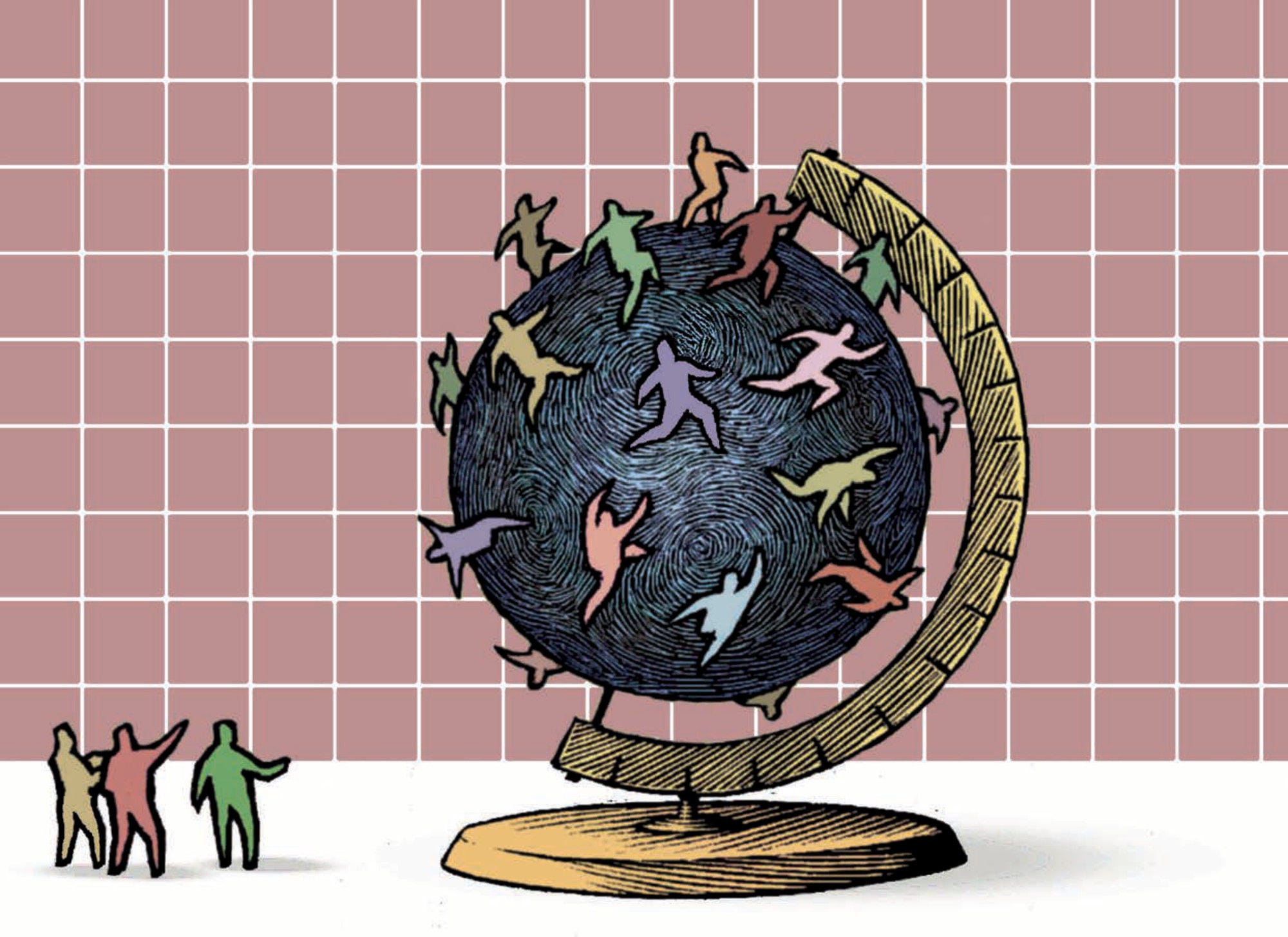In 2017, Canada received 286 000 new immigrants on a long‑term or permanent basis (including changes of status), a 3% decrease compared to 2016. This figure comprises 28.2% labour migrants, 56.2% family members (including accompanying family) and 14.5% humanitarian migrants. Around 136 000 permits were issued to tertiary‑level international students and 214 000 to temporary and seasonal labour migrants.
India, the Philippines and China were the top three nationalities of newcomers in 2017. Among the top 15 countries of origin, India registered the strongest increase (12 000) and Syria the largest decrease (‑22 000) in flows to Canada compared to the previous year.
In 2018, the number of first asylum applicants increased by 12%, reaching around 55 000. The majority of applicants come from Nigeria (9 600), India (4 500) and Mexico (3 200). The largest increase since 2017 concerned nationals of Nigeria (4 100) and the largest decrease, nationals of Haiti (‑6 500). Of the 30 000 decisions taken in 2018, 54% were positive.
The number of resettled refugees and protected persons in Canada decreased by 30%, from 58 900 in 2016 to 41 500 (of whom 27 000 were resettled refugees) in 2017. Of those admitted in 2017, there were more male than female immigrants (21 500 or 52%). Almost half (49%) came from three source countries: Syria (28%), Eritrea (10%), and Iraq (10%). Under the Resettled Refugee category, 16 900 (63%) were Privately Sponsored Refugees, 8 800 (33%) were Government‑Assisted Refugees, and 1 300 (5%) were admitted as Blended Sponsorship Refugees.
Emigration of Canadians to OECD countries decreased by 4.5%, to 41 000. Approximately 28.0% of this group migrated to the United States, 14.7% to the United Kingdom and 11.2% to Korea.
In 2018, Canada introduced a multi‑year immigration level plan designed to increase the number of permanent residents Canada welcomes annually. The plan sets out the most ambitious immigration levels in recent history, with admission targets of 330 800 in 2019, 341 000 in 2020, and 350 000 in 2021.
In economic immigration, the Start‑up Visa pilot programme transitioned into a permanent programme in early 2018. The programme’s goal is to attract innovative foreign start‑up entrepreneurs who have support from a designated Canadian business incubator, angel investor group or venture capital fund. In 2018, 250 primary applicants were admitted through this programme, the highest number to date.
The promotion of migration to regional Canada and rural areas continues. By the end of 2018, over 1 700 Atlantic employers participated in the Atlantic Immigration Pilot to fill labour needs that could not be met locally, leading to nearly 1 500 new permanent residents in Atlantic Canada. Building on this, the Rural and Northern Immigration Pilot was announced in January 2019. The pilot will take a community‑driven approach, building new partnerships and enhancing integration support, in order to attract, assimilate and retain newcomers who will contribute to the economic and labour needs of rural areas.
To facilitate family migration, since 2017, the age limit for dependent children eligible to migrate as an immediate family member or sponsored child increased from under 19, to under 22 years of age. Canada also removed the requirement that applied to sponsored spouses and partners in new relationships to live with their sponsors for two years as a condition for maintaining permanent resident status. This action was taken due to the recognition that an imbalance in the relationship could be created, potentially making the sponsored spouse or partner more vulnerable to abuse.
Increasing francophone immigration to Canada is a further priority area. Released in March 2019, the federal Francophone Immigration Strategy aims to increase French‑speaking immigrants outside of Quebec, support their integration and retention, and strengthen the capacity of Francophone communities. This Strategy builds on the March 2018 federal‑provincial‑territorial Action Plan for Increasing Francophone Immigration Outside of Quebec which includes concrete actions, such as promotion of prospective French‑speaking applicants; engagement with employers; and increased awareness and access to settlement services.
Canada continues to see an increased volume of irregular migration, particularly with asylum seekers crossing the Canada‑U.S. border at non‑ports of entry. The government has taken additional measures to address this recent increase in asylum seekers, including speeding up the asylum process and increased funding for temporary housing in the cities and provinces under particular pressure.
Canada has also made significant progress in reducing processing times and inventories across many permanent resident categories, while meeting the increasing demand for visitor visas, and work and study permits. This was made possible by the multi‑year level plan which allowed for advance planning, along with implementing intake controls in some categories and using innovative new processes in offices in Canada and abroad.
For further information:
www.canada.ca/en/services/immigration‑citizenship.html
